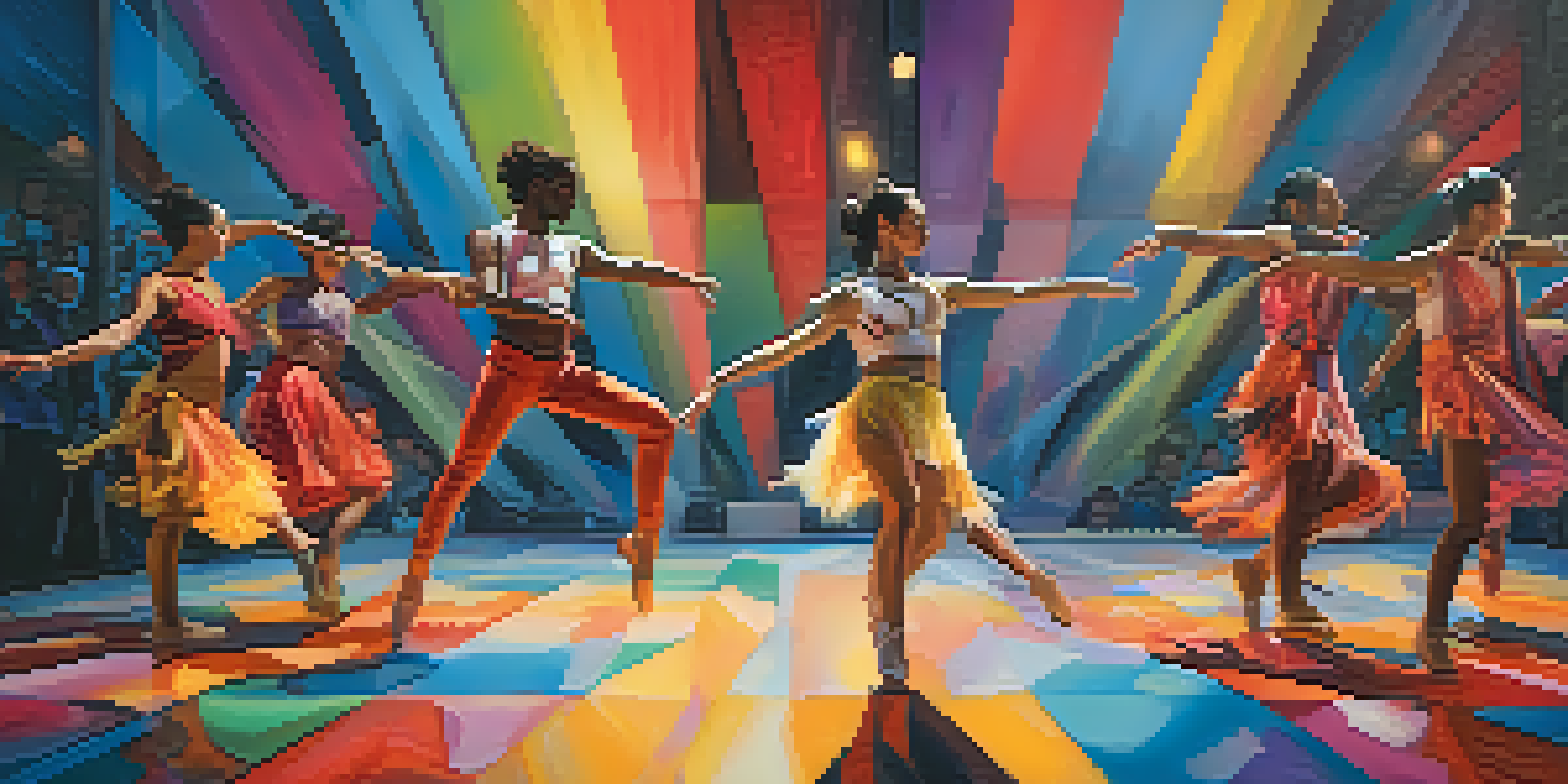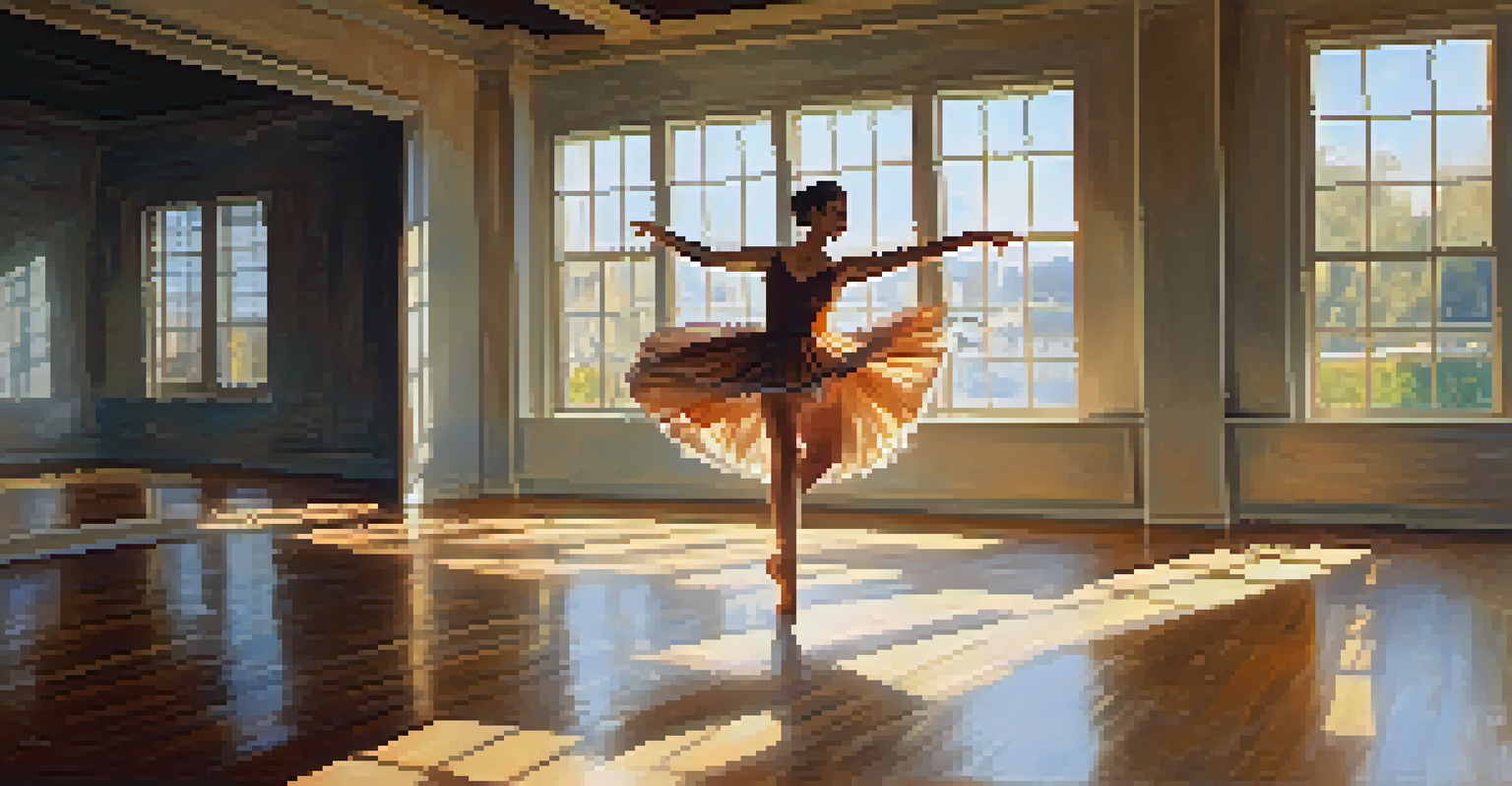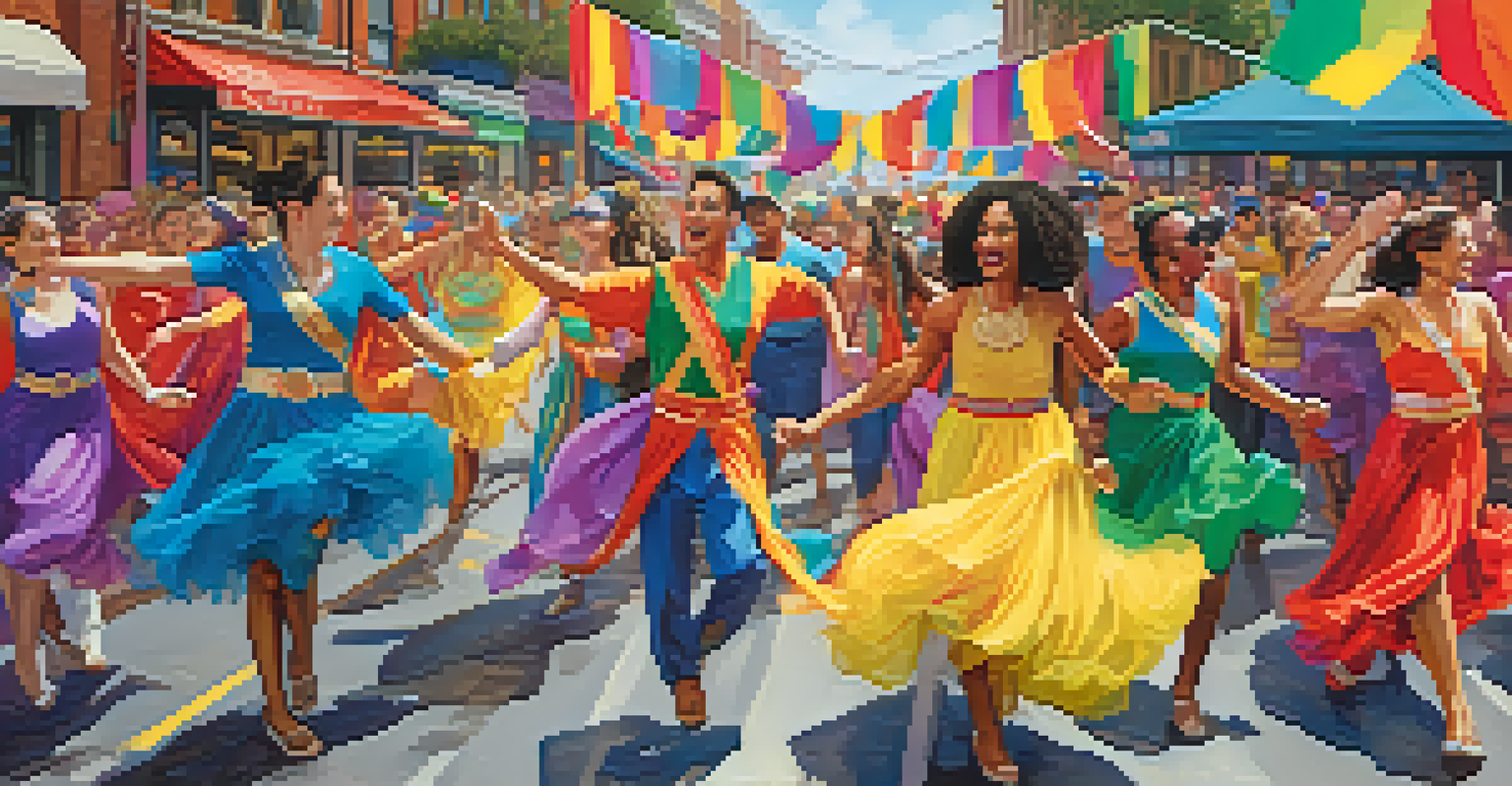Gender Identity in Dance: Expression Through Movement

Understanding Gender Identity in Dance Contexts
Gender identity refers to how individuals perceive themselves and what they call themselves, which can differ from societal norms. In dance, this identity can manifest through various styles and movements that challenge traditional gender roles. By embracing diverse expressions, dancers create a more inclusive environment that allows everyone to feel represented.
Dance is the hidden language of the soul.
For example, a male dancer may choose to perform in a traditionally feminine style, using grace and fluidity to express himself authentically. This not only enriches the performance but also encourages audiences to rethink preconceived notions about gender. In this way, dance becomes a powerful medium for exploring and affirming one's gender identity.
Ultimately, understanding gender identity within the dance community fosters a deeper appreciation for the artistry involved. It encourages dancers to express themselves freely, leading to performances that resonate on a personal and societal level.
Celebrating Diversity Through Dance Styles
Dance encompasses a wide variety of styles, each with its own cultural context and expressive potential. From ballet to hip-hop, these forms offer unique opportunities for individuals to express their gender identity. This diversity allows dancers to explore different aspects of themselves, creating an enriching tapestry of movement.

For instance, contemporary dance often breaks away from traditional gender norms, allowing performers to blend masculine and feminine qualities seamlessly. This fusion not only challenges stereotypes but also paves the way for new narratives in storytelling through movement. Dancers can embody their gender identities in ways that feel authentic, fostering a sense of belonging.
Embracing Gender Diversity in Dance
Dance allows for the exploration and expression of diverse gender identities, creating a more inclusive environment for all performers.
Moreover, styles like voguing and ballroom have roots in LGBTQ+ culture, emphasizing the importance of representation and community. These dance forms celebrate individuality and encourage participants to express their identities fully, demonstrating that dance is a universal language that transcends boundaries.
The Role of Choreography in Expressing Gender Identity
Choreography plays a pivotal role in articulating gender identity within dance. Choreographers often draw from their own experiences and identities, infusing their works with personal significance. This creative process not only shapes the performance but also invites audiences to engage with gender narratives in meaningful ways.
The dance is a poem of which each movement is a word.
For example, a choreographer might design a piece that highlights the struggles and triumphs of non-binary individuals, using movement to convey emotions that words cannot capture. Such thoughtful choreography can spark conversations around gender identity, pushing the boundaries of what dance can communicate. It transforms the stage into a platform for advocacy and awareness.
Additionally, collaboration among diverse choreographers can lead to innovative works that embrace various perspectives on gender. By creating spaces for dialogue and experimentation, the dance community can continuously evolve, reflecting the complexities of society and the human experience.
Movement as a Form of Self-Expression
Movement is a profound form of self-expression that transcends verbal communication. For many dancers, the act of moving allows them to convey emotions, thoughts, and identities that might be difficult to articulate otherwise. This is especially true for those who identify outside of the traditional gender binary, as dance provides a space to explore and express their individuality.
Consider a dancer who uses sharp, angular movements to express frustration with societal expectations around gender. In contrast, another might adopt soft, flowing movements to showcase vulnerability and acceptance. Each person's unique interpretation of movement underscores the idea that dance is deeply personal and can be a reflection of one's inner self.
Choreography as Gender Narrative
Choreography can convey complex gender narratives, inviting audiences to engage with and reflect on gender identities through movement.
As dancers find their voice through movement, they also inspire others to do the same. By showcasing their authentic selves on stage, they encourage audiences to embrace their identities, fostering a culture of acceptance and understanding.
Impact of Dance on Gender Norms in Society
Dance has the power to challenge and reshape societal norms around gender. When dancers break away from traditional roles, they open the door for broader acceptance of diverse identities. This ripple effect extends beyond the stage, influencing how society perceives and interacts with issues of gender.
For instance, a dance performance that showcases non-binary identities can spark conversations in the community about inclusivity and representation. As audiences witness these narratives unfold through movement, they may begin to question their own beliefs and biases. Dance becomes a catalyst for change, pushing society toward greater understanding and acceptance.
Moreover, as more artists embrace and celebrate diverse gender identities in their work, the conversation around gender continues to evolve. This ongoing dialogue fosters a more inclusive environment, encouraging everyone to express themselves authentically without fear of judgment.
The Intersection of Dance and LGBTQ+ Activism
Dance has long served as a platform for LGBTQ+ activism, allowing artists to express their experiences and advocate for change. Many dancers use their art to raise awareness about issues facing the LGBTQ+ community, creating works that challenge discrimination and promote acceptance. This intersection of dance and activism enriches the art form while creating meaningful dialogue.
For example, performances that highlight the struggles of LGBTQ+ individuals can resonate deeply with audiences, evoking empathy and understanding. These narratives not only celebrate identity but also remind viewers of the importance of equality and representation. Dance becomes a powerful tool for social change, inspiring action and fostering community support.
Dance as a Catalyst for Change
Through performances that challenge traditional norms, dance can influence societal perceptions of gender and promote acceptance.
Furthermore, events like Pride parades often feature dance as a central element, celebrating the vibrancy and diversity of LGBTQ+ identities. Through this visibility, dancers can share their stories and experiences, showcasing the beauty of inclusivity in a world that often seeks to impose limitations.
Future Trends in Dance and Gender Expression
As society continues to evolve, so too will the ways in which gender is expressed through dance. Emerging trends suggest a growing acceptance of non-traditional gender identities, leading to more inclusive performances and choreographies. Dancers are increasingly empowered to explore and express their unique identities, pushing the boundaries of conventional dance narratives.
For instance, we may see more collaborations between dancers of varying gender identities, resulting in innovative works that challenge the status quo. This collaboration can foster a richer understanding of gender diversity, encouraging dancers to learn from one another and expand their own perspectives. The future of dance promises to be an exciting tapestry of voices and experiences.

Moreover, as technology continues to shape the arts, we can expect to see new platforms for showcasing diverse gender expressions in dance. From virtual performances to interactive experiences, the possibilities are endless, allowing artists to reach wider audiences while affirming their identities.